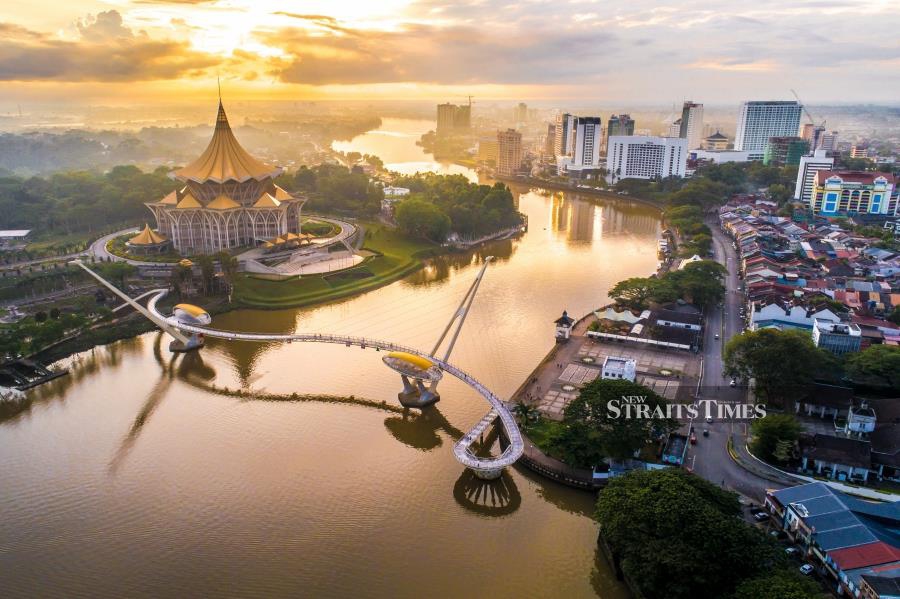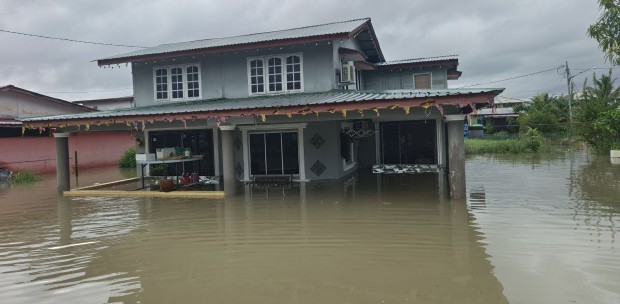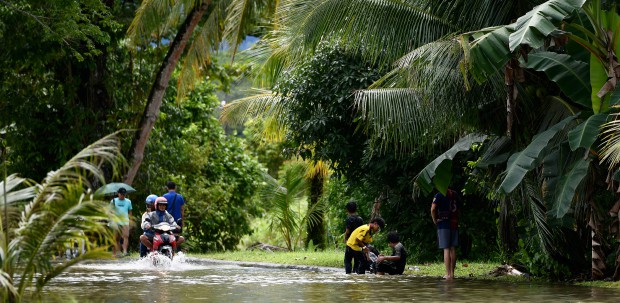THE welcoming beam on his kindly face dissipates any trace of nerves that had hitherto accompanied my steps into the spacious (and surprisingly, homely) office belonging to Datuk Seri Abdul Karim Rahman Hamzah, Sarawak's Minister of Tourism, Arts and Culture in Bangunan Baitulmakmur II, in Kuching.
"Come in, come in! It's been a while," he says, extending his hand in a warm handshake before motioning for me to take a seat on the sofa arranged across from his work table, which is laden with files and books that threaten to topple should anyone accidentally brush against them. "Excuse the mess," he adds sheepishly, noting my furtive glance in that direction.
I wave the affable minister's apology aside with an understanding nod before expressing surprise that he still remembers me from our last meeting. "We met before Covid kan?" he asks, before turning to his smiling assistant who's seated at a discreet distance from us for confirmation. She nods and he's duly appeased.
Tourism is one of the key drivers of Sarawak's economy, and it simultaneously foster economic prosperity, social inclusivity and protect the environment as envisioned in the state's Post Covid-19 Development Strategy (PCDS) 2030.

"We're on the right track," exclaims Karim, who's currently serving his fifth term in this ministry, eyes behind his glasses dancing happily. "Ever since the borders were reopened, sometime in April last year, the flights are coming back, which means that the number of visitors coming in — both foreign and local — is as expected."
Last year, shares the former assistant minister of housing and youth development, the target was 1.2 million visitors. But when December came, the number reached way above that — at 2.02 million. "I put our success down to having a good team, from the state level right up to our Right Honourable Premier, Abang Abdul Rahman Johari Abang Openg," says Karim, before adding admiringly: "He has looked after the state as well as those agencies responsible for driving tourism very well and that is reflected."
The target for this year, shares the politician, is three million visitor arrivals. And he's optimistic about attaining that number. Says Karim: "To hit three million, every month there must be more than 200,000 visitors coming in. Looking at how things are moving and the kind of events we're going to organise, I think it's very possible."
Presently, in terms of incoming visitors, the highest number is from Brunei, he shares, adding that many like to descend on the city of Miri and Lawas, a small town approximately 1,200km away from Kuching, on weekends. "We've created quite a lot of events in Miri, for example, our Borneo Jazz Festival." This festival, incidentally, is one of the longest running jazz festivals in the region.
Then there's Bekenu, a small and peaceful fishing town near Miri. "This place is very fertile," shares Karim, before elaborating: "During the fruit season, you'll see thousands of Bruneians coming down on the weekend. For them, food here is so much cheaper. They'd drive across the border, stay for a night or two, and feast on good food. The F&B industry is doing really well there. We're looking to create more events and other activities in Miri."
UNITY AND HARMONY

If there's one thing I've always loved about coming to Sarawak, and Kuching, in particular, it is the sense of racial harmony that seems to permeate this Land of the Hornbills. People are so chilled and everyone just seems to "get on". I tell Karim so and he beams in return, before sharing that there are 31 different ethnic groups in the state (to date), each with their own identity, yet living in peace and harmony.
The secret, he says, lies in the tolerance among its people and a deep understanding of each other's culture and heritage. "By the way, there's no state religion here in Sarawak," he points out, adding that yes, while the national religion is Islam, there's never been any legislation passed by the state assembly to officially declare a state religion for Sarawak.
These are the little things that, as a minister, he feels that Malaysians need to learn about in so far as why Sabah and Sarawak are so different. "It goes back to how politics is being managed. Sometimes a lot of these problems are caused by politicians themselves," he surmises, bespectacled eyes thoughtful.
Continuing, he muses: "In Sarawak, you can go to any kopitiam or Malay/Chinese stalls and see Muslims and non-Muslims eating together. There's a place somewhere in Satok where I like to have my chicken bak kut teh. The husband is Chinese and his wife, a Dayak. The food served is halal, but there's no halal sign. Almost 80 to 90 per cent of those that frequent the place are Muslims. Even ustaz go there. There's no feeling of was was (uncertainty) because it's a business that has been serving Sarawakians over generations."
Enthusiastically, Karim, who has a law background, continues: "We know where they get their meat and ingredients from, etc. And in turn, they know the patrons that come to their place also include Muslim Malays. That kind of trust is something which you don't feel or see in Peninsular Malaysia. This is just a small example, but it illustrates perfectly how we understand each other."
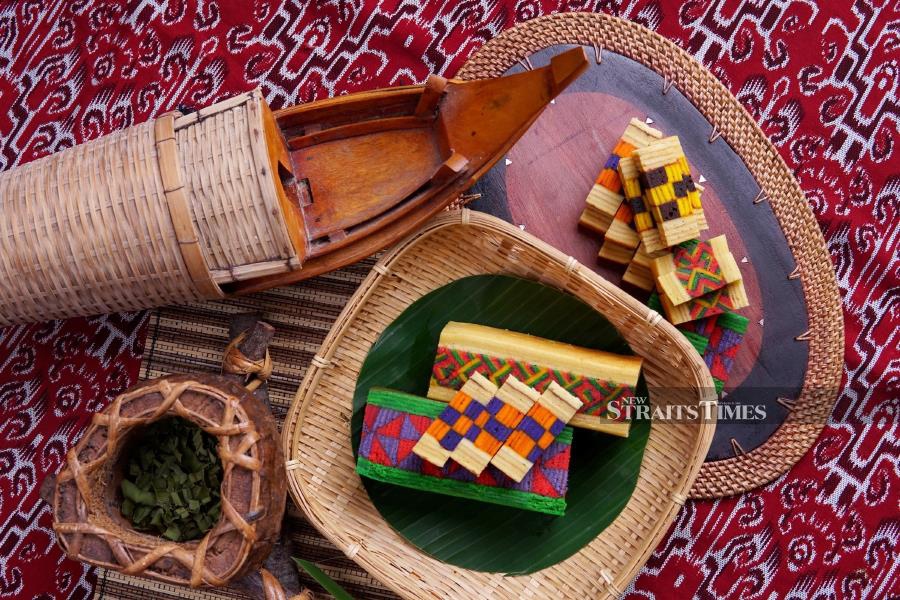
His eyes light up again when he offers me another example: "If you go to Miri, there's one mosque, which is located next to a church. On Fridays, the church will open its gates for the Muslims to park their cars in the compound. Meanwhile, on Sundays, when the Christians are having mass, the mosque will open its gates for them to do the same. This kind of tolerance and understanding is so common here in Sarawak."
What's the biggest misconception that Peninsular Malaysians have about Sarawakians? I couldn't help asking, as I reflect silently on my own thoughts about our Sabah and Sarawak cousins. The minister's brows furrow as he considers the question.
"I don't think there are major misconceptions," he replies, simply, before musing: "It's just that sometimes, there's not much cerita (stories) being portrayed about Sarawak. Some Peninsular Malaysians still think that Sabahans and Sarawakians live on trees, are not so educated etc. The problem probably stems from the fact that there's not much of an integration. Partly to blame could be the government of the day."
SARAWAK'S JEWELS
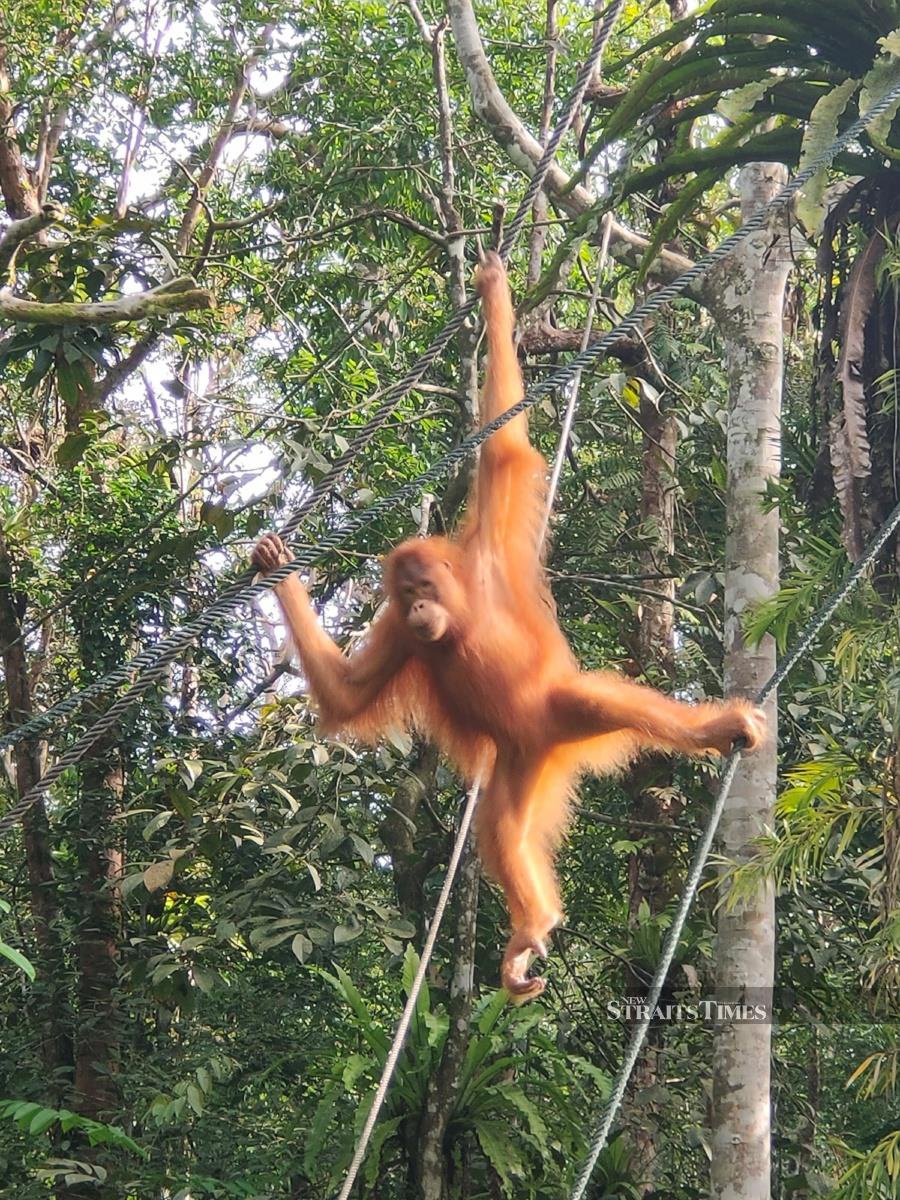
Sarawak, says Karim, who's from Parti Pesaka Bumiputera Bersatu (PPBB), cannot promote itself as a shopping destination. Its main product, its jewel, is nature. Pride lacing his tone, he points out: "We've got beautiful forests, rivers and a rich continental shelf… you want to go fishing? That's where you go. I love fishing and that's how I know."
Every weekend, he adds, there will be hundreds of Singaporeans and Peninsular Malaysians coming down. They will book a ship to take them out to sea.
From the airport, they head straight to the jetty and spend two nights out at sea. On Sunday, they head straight back to their respective states and country. The fish they catch will be shipped or couriered over by the boat operators.
For culture vultures, there's always the impressive Borneo Cultures Museum, opened in March last year, which, with its 6,726 square metres of exhibition space, makes it the second largest museum in Southeast Asia.
"The number of visitors to this museum, ever since it opened, has reached more than 600,000. It's become a must-visit place for those descending on Kuching," says Karim, his pride palpable. And of course, there's the Sarawak Cultural Village too.
Currently, there are plans to build up Baong, which, according to Karim, is blessed with a fairy cave, wind cave and a beautiful lake. "All these attractions are within less than an hour's drive from Kuching. As you can see, it's very easy to market Sarawak."
Asked what kind of tourism he desires for Sarawak, he replies: "We can't run away from nature because we're very proud of what we have. Sarawak has the most nature parks and national parks, but not all these parks are opened to the public. When you gazette them as a national park, there are lots of things you can't do."
Take hunting, for example. "We need to protect and preserve our flora and fauna, and the surrounding environment. Probably in the future, as the infrastructure gets better, we'll open up a few more. Now the famous ones are Bako National Park and Gunung Gading National Park in Lindu, which are all nearby. We also have the Semenggoh Wildlife Centre, where you can see the Orang Utan up close. There are so many. We'll be beefing them up and upgrading the facilities gradually."
BUILDING AWARENESS

Expression earnest, Karim, who has also served as the state assemblyman for Asajaya since September 2001, is committed to seeing tourism in the state develop at a pace that is manageable.
What's a good pace? I ask, curious. His brows furrow again and he pauses to reflect. "The one that we're seeing now," he eventually replies, before elaborating: "They can come in, respect our environment, our forest and not spoil it, because we also have a responsibility to preserve this for our future generation."
Building up awareness and educating people take time, he adds, just like building up integration. "It's important to make people aware of the importance of not polluting the rivers and seas, for example," says Karim, adding: "I go out for deep sea fishing very often. Ten or 20 years ago, when I used to go with my fishing kaki (buddies), I thought nothing of throwing plastic bags or bottles into the sea. Now I see people bringing their own pails so they can collect their waste and bring it back for disposal."
A smile crosses his face when he recalls a memory from the past. "See, the Sarawak River? One side used to be the city, and across would be the kampung side. In the 1960s and 70s, you'd see a lot of flying toilets or jamban terbang along that whole stretch of river. People would use the river as a place to discharge and throw their rubbish. Now we don't see that anymore."
Leaning in to make his point, Karim says: "See how many years it has taken to create that kind of awareness? To the point where people know that it's not right for them to throw rubbish everywhere. We're slowly doing this with the other rivers in other areas too."
As we near the end of our chat, and I'm gently reminded that Karim has another appointment in town, I ask this likeable politician what he feels he needs to continue doing in his capacity as the tourism minister.
A flicker of something undecipherable crosses his eyes before he eventually replies: "Wherever we go, we try to educate and advocate. As leaders, we must attempt to set an example and create awareness — not just in the constituency that we're looking after, but also for the whole state. It can be challenging, but this is our duty."


